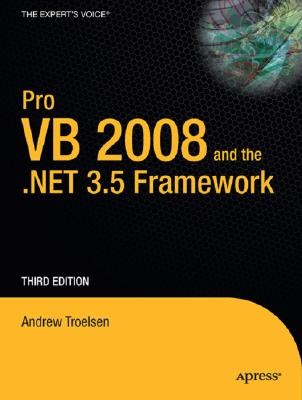
- We will send in 10–14 business days.
- Author: Andrew Troelsen
- Publisher: Apress
- ISBN-10: 1590598229
- ISBN-13: 9781590598221
- Format: 18.4 x 23 x 5.7 cm, minkšti viršeliai
- Language: English
- SAVE -10% with code: EXTRA
Reviews
Description
The point of this chapter was to demystify the garbage collection process. As you have seen, the garbage collector will only run when it is unable to acquire the necessary memory from the m- aged heap (or when a given AppDomain unloads from memory). When a garbage collection does occur, you can rest assured that Microsoft's collection algorithm has been optimized by the use of object generations, secondary threads for the purpose of object finalization, and a managed heap dedicated to host large objects. This chapter also illustrated how to programmatically interact with the garbage collector using the System. GC class type. As mentioned, the only time when you will really need to do so is when you are building finalizable or disposable class types. Recall that finalizable types are classes that have overridden the virtual System. Object. Finalize() method to clean up unmanaged resources (at some time in the future). Disposable objects, on the other hand, are classes (or structures) that implement the IDisposable interface. Using this technique, you expose a public method to the object user that can be called to perform internal cleanup ASAP. Finally, you learned about an of- cial "disposal" pattern that blends both approaches. PART 3 Advanced VB Programming Constructs CHAPTER 9 Working with Interface Types This chapter builds on your current understanding of object-oriented development by examining the topic of interface-based programming.
EXTRA 10 % discount with code: EXTRA
The promotion ends in 23d.23:25:58
The discount code is valid when purchasing from 10 €. Discounts do not stack.
- Author: Andrew Troelsen
- Publisher: Apress
- ISBN-10: 1590598229
- ISBN-13: 9781590598221
- Format: 18.4 x 23 x 5.7 cm, minkšti viršeliai
- Language: English English
The point of this chapter was to demystify the garbage collection process. As you have seen, the garbage collector will only run when it is unable to acquire the necessary memory from the m- aged heap (or when a given AppDomain unloads from memory). When a garbage collection does occur, you can rest assured that Microsoft's collection algorithm has been optimized by the use of object generations, secondary threads for the purpose of object finalization, and a managed heap dedicated to host large objects. This chapter also illustrated how to programmatically interact with the garbage collector using the System. GC class type. As mentioned, the only time when you will really need to do so is when you are building finalizable or disposable class types. Recall that finalizable types are classes that have overridden the virtual System. Object. Finalize() method to clean up unmanaged resources (at some time in the future). Disposable objects, on the other hand, are classes (or structures) that implement the IDisposable interface. Using this technique, you expose a public method to the object user that can be called to perform internal cleanup ASAP. Finally, you learned about an of- cial "disposal" pattern that blends both approaches. PART 3 Advanced VB Programming Constructs CHAPTER 9 Working with Interface Types This chapter builds on your current understanding of object-oriented development by examining the topic of interface-based programming.


Reviews